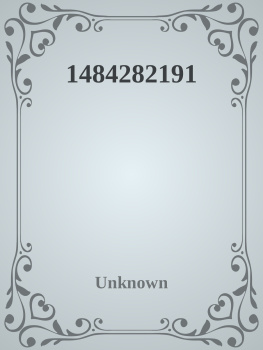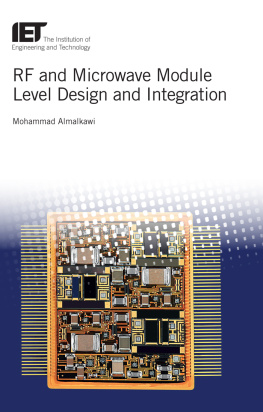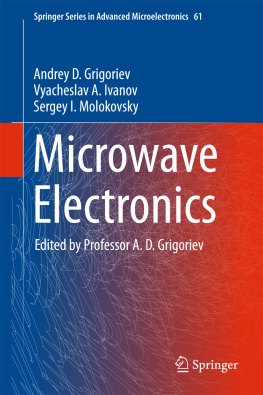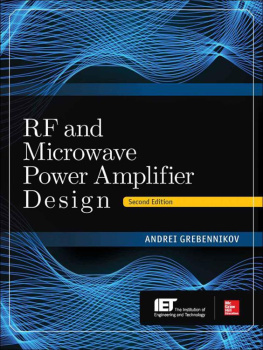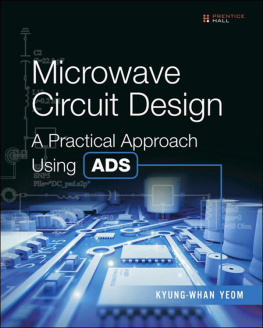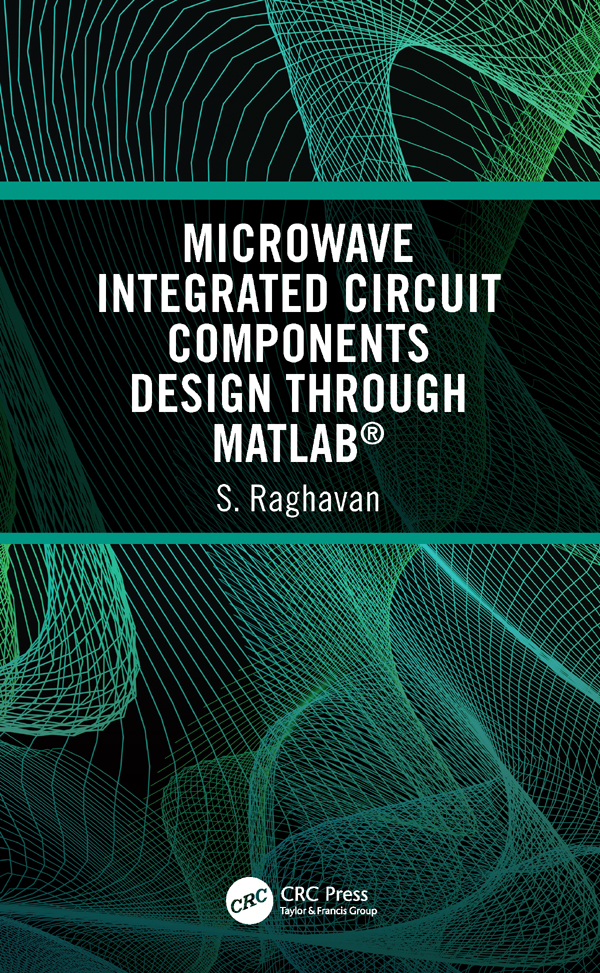Contents
Landmarks
Microwave Integrated Circuit Components Design through MATLAB
Microwave Integrated Circuit Components Design through MATLAB
S. Raghavan

MATLAB is a trademark of The MathWorks, Inc. and is used with permission. The MathWorks does not warrant the accuracy of the text or exercises in this book. This books use or discussion of MATLAB software or related products does not constitute endorsement or sponsorship by The MathWorks of a particular pedagogical approach or particular use of the MATLAB software
CRC Press
Taylor & Francis Group
52 Vanderbilt Avenue,
New York, NY 10017
2020 by Taylor & Francis Group, LLC
CRC Press is an imprint of Taylor & Francis Group, an Informa business
No claim to original U.S. Government works
International Standard Book Number-13: 978-0-367-24312-8 (Hardback)
This book contains information obtained from authentic and highly regarded sources. Reasonable efforts have been made to publish reliable data and information, but the author and publisher cannot assume responsibility for the validity of all materials or the consequences of their use. The authors and publishers have attempted to trace the copyright holders of all material reproduced in this publication and apologize to copyright holders if permission to publish in this form has not been obtained. If any copyright material has not been acknowledged please write and let us know so we may rectify in any future reprint.
Except as permitted under U.S. Copyright Law, no part of this book may be reprinted, reproduced, transmitted, or utilized in any form by any electronic, mechanical, or other means, now known or hereafter invented, including photocopying, microfilming, and recording, or in any information storage or retrieval system, without written permission from the publishers.
For permission to photocopy or use material electronically from this work, please access www.copyright.com (http://www.copyright.com/) or contact the Copyright Clearance Center, Inc. (CCC), 222 Rosewood Drive, Danvers, MA 01923, 978-750-8400. CCC is a not-for-profit organization that provides licenses and registration for a variety of users. For organizations that have been granted a photocopy license by the CCC, a separate system of payment has been arranged.
Trademark Notice: Product or corporate names may be trademarks or registered trademarks, and are used only for identification and explanation without intent to infringe.
Library of Congress Control Number: 2019949280
Visit the Taylor & Francis Web site at
http://www.taylorandfrancis.com
and the CRC Press Web site at
http://www.crcpress.com
Dedication to
JEGADHA Singaravelus,
Alagappans, Sarojini Sellamuthus, VNC Vijayakumars
Dr. A. MEENAKSHI SUNDARI, ARUNDHATHI, ABHIMANYU
Students and
Prof. Bharathi Bhat
The evolution of microwave integrated circuits (MIC) over the past five decades or so has revolutionized the very approach to microwave components/system design and technology. As a result, the earlier waveguide-based components/systems have been, almost completely, taken over by the lighter and more compact MIC-based versions. It is this area of MIC that S. Raghavan has been involved with throughout his professional career at the National Institute of Technology-Trichy (India).
Besides teaching at the BE/MTech levels, Dr. Raghavan has been guiding research and technology-driven projects in the area of MIC. Realizing the importance of practical knowledge, he has created advanced laboratories so that the students can have hands-on experience in the design, development, and testing of MIC components and antennas. He has also evolved MATLAB-based techniques to ease the design of various MIC components. This book is the outcome of his dedicated effort and involvement in teaching and research in this specialized area for nearly 35 years.
The book emphasizes the network approach to the design of MIC components, and this aspect has been lucidly explained. The application of this approach to the most commonly used components forming any MIC system such as, filters, directional couplers, power dividers, and amplifiers is covered systematically. In a way, the seemingly difficult subject has been simplified through the use of circuit theory and MATLAB-based design techniques. With its easy-to-understand style, this book should be useful not only to the students and designers of MIC but also to students having the basic knowledge of network theory to understand integrated circuits at microwave frequencies.
Bharathi Bhat
Retired Professor, IIT Delhi
Necessity is the mother of invention. This is the philosophy behind numerous inventions. During the Second World War, there was a dire necessity for a high-power oscillators. The solution came in the form of the magnetron. Due to the skin depth, the conducting wires were of no use at microwave frequencies and so came the usage of waveguides. As the frequency gets higher and higher, the waveguides also find lesser usage in fewer applications. Then, the need for microwave integrated circuits (MICs) was felt technically. Not only that, due to the inventions of smaller devices like Read, Avalanche Transit Time devices, and other similar diodes, the waveguides could not be used for integration. The backbone of MICs are planar transmission lines. First in that family is the strip line, followed by the micro strip line, slot line, coplanar waveguides (CPWs), coplanar strip (CPS), finline, image guide, and variants of the abovementioned planar transmission lines. The golden period of microwaves (centimeter waves) was 1935-1945. The transmission lines being distributed networks, the first operation one should do is to find out the equivalence of distributed theory into lumped theory. The first chapter deals with a thorough microwave circuit theory along with relevant examples. The equivalent network theory needed for the design is also explained. The design parameters and characteristics of various planar transmissions lines are detailed in the second chapter.
The third chapter contains the basics of even mode and odd mode analysis of the microwave integrated components. From the first principle, the design formulae derivation and layout formulation of every component (branch-line coupler, hybrid ring coupler, rat-race coupler, backward wave coupler, and various power dividers) are detailed. Filters are very important components. If a person is thorough with the design and layout of the filters, understanding amplifiers and oscillators can become very simple. Binomial theory, maximally flat response, filter theory, determination of prototype values, and design and layout of various filters form the fourth chapter. The fifth chapter contains stability analysis, various power gains, constant gain circles, stability circles, noise figure circles, and the design and layout of matching networks for the amplifiers. The same theory with the Rollet stability factor and the Delta factor having an opposite magnitude of that of the amplifiers will facilitate one to be thorough with microwave oscillator design procedures. All the above analysis is supported by conventional formulae (from the first principle).
The conventional basic formulae are used for the entire design of techniques in all chapters. If one understands the theory and knows the ins and outs of MATLAB, the programming (CAD DESIGN) can very easily be done. THE BEAUTY and (for the first time) the UNIQUE PURPOSE OF THIS BOOK is that every step explained in the theory portion is also written in MATLAB. Those programs are tested and one can run and verify them. This process will inspire one to write ones own program and make the microwave integrated circuit component design an interesting one. Microwaves are made easy by proper understanding of the concepts. They are made easy by easy understanding! Who said microwave designs are tough and unpopular? This book is the outcome of 38 years of teaching in REC/NIT, Trichy by the author.


